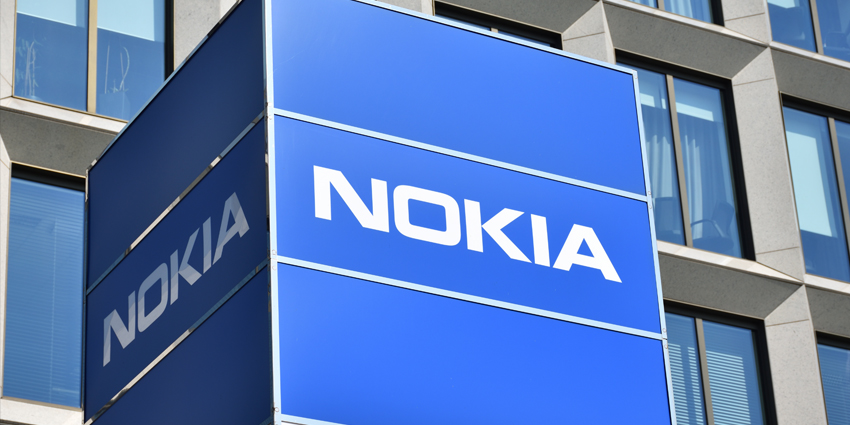Extended Reality innovators are constantly looking for new ways to make experiences feel more engaging and immersive.
Whether users are using an AR app on their smartphone, exploring virtual worlds with a headset, or interacting with holograms in mixed reality, developers want them to feel fully submerged in the experience. Part of unlocking true immersion is finding ways to engage as many different human senses as possible in an XR experience.
At first, developers focused on our sense of sight, creating new screens and experimenting with foveated rendering to give us true-to-life visuals with minimal lag. Next, pioneers in the XR space began experimenting with sound and touch. A 360-degree spatial sound emerged as a new way to position people within hyper-realistic virtual environments. Haptic feedback delivered through body suits and gloves allowed users to touch, hold, and interact with virtual objects.
Now innovators are approaching a new frontier in immersion: smell.
Does Smell Really Improve XR Immersion?
The power of smell is often overlooked in most communities. We often forget just how valuable the right scent can be in different situations. However, a life without smell would be pretty bland. Smell helps human beings to detect potential threats, informing us when there’s a potential gas leak in a building and allowing us to sense smoke before we see it billowing from beneath a door.
Smell also engages our emotional brain. Studies have found smells trigger about 75% of our daily moods. The right smell can make us feel energetic, happy, anxious, or disgusted.
In some cases, smells even help with forming memories and enhancing learning experiences. For instance, we can learn what a certain food smells like when it’s out of date and use that knowledge to avoid food poisoning.
In the world of XR, virtual smells could be a lot more beneficial than many people realise. First and foremost, the right olfactory components in a training simulator could be extremely valuable in providing certain types of education. Swedish researchers even published a study about how smells could help train wine tasters and similar professionals.
Smells also help to enhance the realism of an experience and engage us on a deeper level. In a training simulator built for firefighters, the smell of smoke from different locations could help individuals to detect where the source of the fire might be and prepare them for tackling real threats in a physical landscape.
How XR Innovators are Experimenting with Smell
Although adding smell to XR environments might seem like a relatively new concept, it’s actually something innovators have been exploring for a while. In the late 1990s, Myron Krueger, a man known for coining the term “artificial reality”, received a grant to help him develop smells for VR medical training simulations.
Leading Olfactory VR manufacturer OVR Technology has been working on ways to help users “smell” virtual reality for a while now. The company’s flagship product, the “ION”, is a snap-in refillable cartridge for VR headsets with nine fundamental chemical compounds. These compounds can be mixed into hundreds of different smells, which are automatically released to users when they trigger certain actions within an XR environment.
In 2022, Scentrealm Tech also announced the completion of its long-term research into the power of smell within XR environments. The firm successfully created a product known as “Telescent”, which provides remote scent experiences within XR environments.
The system allows Scentrealm to distribute remote smells to users in immersive environments to help boost the realism of a simulation or virtual experience. In addition to the Telescent solution for remote smells, Scentrealm also offers a selection of remote-smell accessories for end-users. These products combine audio and visual playback with smell technology to help submerge users deeper into their immersive experiences.
Will XR Benefit from the Inclusion of Smells?
Bringing the user’s sense of smell into the XR environment could have a number of amazing benefits. From a training perspective alone, leveraging the sense of smell can help companies to improve knowledge retention, and enhance the quality of the education given to users. For instance, a VR headset used to train insurance adjusters to track property damage could stimulate the smell of mould or fire damage in the home, for a more immersive education.
Bringing smell into the XR environment could also allow companies to build more emotionally engaging and memorable experiences into customer interactions. For instance, Scentrealm’s technology is already offering solutions specifically designed for the retail and travel landscape.
In the travel and tourism space, a scent component added to XR could help travellers to imagine themselves walking through a market in a distant, exotic location, or visualise the sea with the scent of fresh, salty air. Retail companies could entice their customers with delectable scents connected to food products, health and beauty items, or fragrances.
A smell can even trick our brains in other ways and create unique illusions within XR environments. For instance, PHD candidate Jas Brooks discovered introducing certain smells, such as cayenne pepper, to a user when they were approaching a cabin furnace in VR would actually make them feel warmer.
Is Smell the New Frontier for XR?
Just as touch and sound in the XR experience have helped to deepen the immersion available to today’s virtual explorers, introducing smell has the potential to drive a number of excellent benefits too. The more of our senses we can engage as we navigate the VR, MR, and AR landscapes, the more realistic these environments will become.
Of course, bringing smell into XR isn’t without its challenges. Unless creators invest enough time and effort into getting the smell just right, there’s a risk that unusual odours could break our sense of immersion too. There’s significant research before smell in XR becomes just as commonplace as sight or sound. However, the evidence suggests many pioneers are already on their way to discovering the true power of immersive odours.







